Vancouver is built for paddleboarding: sheltered urban inlets, long sandy beaches, and glassy lakes within an hour. This guide keeps it practical—where to launch, when to go, how to read local wind and tide, and which rentals and lessons actually make life easier. Whether you’re trying SUP for the first time or stacking after-work laps, you’ll find a route here that fits your day and the weather.
Quick Picks
- Best urban beginner loop: False Creek from Granville Island (calm water, easy rentals).
- Sunset views: Second or Third Beach in English Bay on a light-wind evening.
- Lessons + rentals in one place: Jericho Beach (Windsure; mellow shoreline).
- Classic North Shore morning: Deep Cove to the Jug Island area before the wind builds.
- Flatwater days: Buntzen, Sasamat, or the south end of Alouette Lake.
Where to go Paddleboarding in Vancouver
False Creek & Granville Island
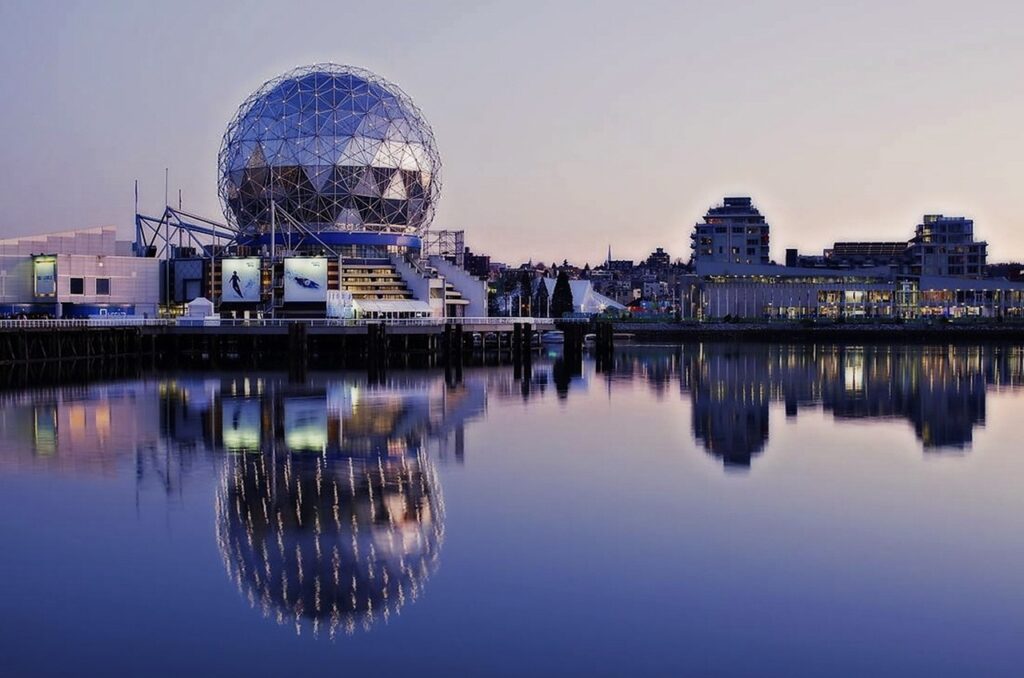
Why go: Sheltered, central, and busy in a good way. You’ll paddle past marinas, waterfront parks, bridges, and the market—eye candy all the way around. Mornings are usually the smoothest; by late day, boat traffic and wind ripple the surface. Treat it like a slow-speed water street: stay right along shore, cross channels decisively, and assume ferries and rowers can’t dodge you quickly.
Launch near Granville Island for easy access and rentals/lessons. Hug the shoreline to keep wake manageable, and avoid idling in ferry docks or under low-clearance bridges at peak tide. If you’re brand new, this is the ideal “first hour on a board” venue: short laps, lots of exit points, and coffee bribes within 200 meters of your car.
Best time: Mornings are typically the calmest. On sunny weekends, go early for parking and quieter water.
Rentals & tours: Vancouver Water Adventures (Granville Island) has boards, lessons, and guided paddles. If you’re brand new, a 60–90 minute intro pays off fast.
English Bay: Sunset, Second & Third Beach
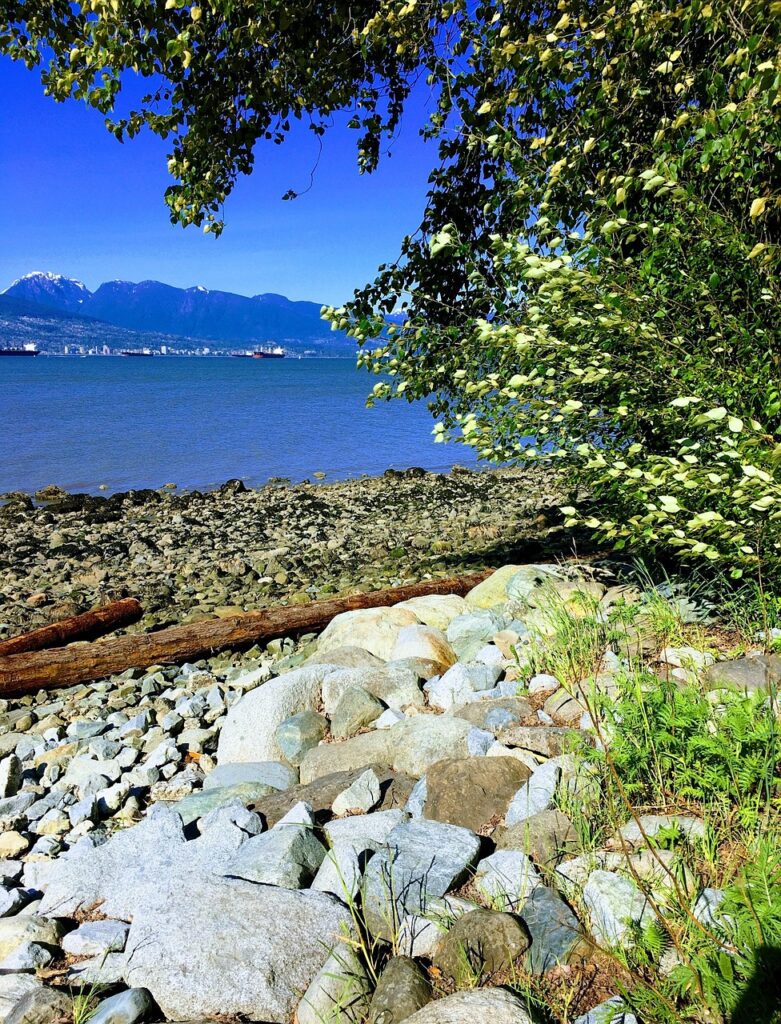
Why go: This is the postcard paddle—city skyline, Lions Gate, and mountains stacked beyond. On glassy mornings and calm evenings, it’s dreamy; on windy afternoons, it’s a short course in balance. Use the shoreline from Second to Third Beach for the most protection and to keep quick exit options if chop builds.
Respect swim zones and give anchored boats a wide berth. After heavy rain, check beach advisories; closures happen. If you’re chasing color, golden hour here is peak Vancouver: mellow wind, smooth water, and an easy glide back to shore before dark.
Best time: Early morning or golden hour. Weekday evenings often serve up the smoothest water.
Heads-up: Check beach advisories after heavy rain; closures can pop up. Keep a wide berth around the swim areas and anchored boats.
Kitsilano Beach
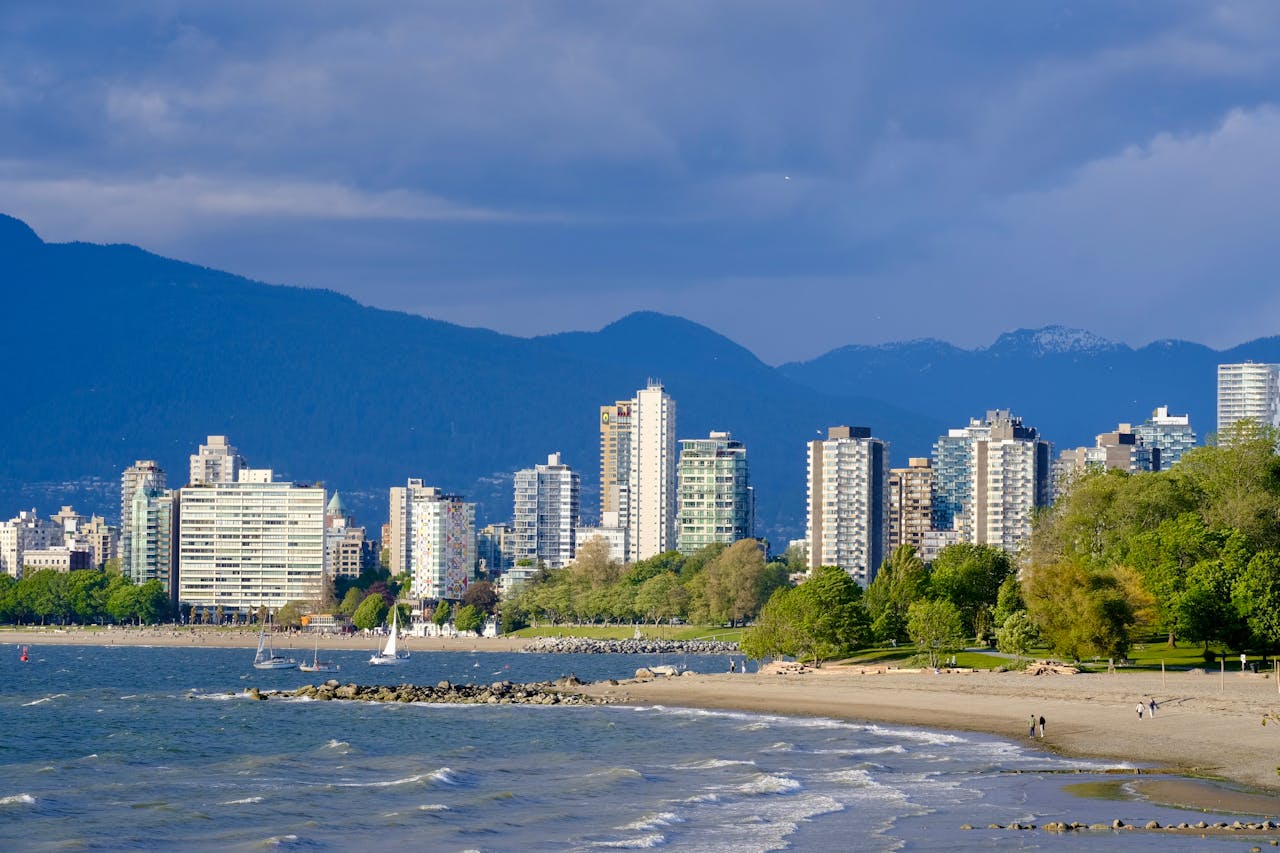
Why go: Social, lively, and conveniently close to good food. On calm mornings you can cruise from Kits toward Vanier Park or tuck behind Kits Point to keep it silky. Expect boat wake and breeze to rise through late morning.
This is a great confidence builder after you’ve tried False Creek: small open-water taste, regular bail-out points, and a forgiving shoreline. Watch your fin depth near low tide, and share space politely with swimmers along the beach edge.
Jericho Beach & Spanish Banks
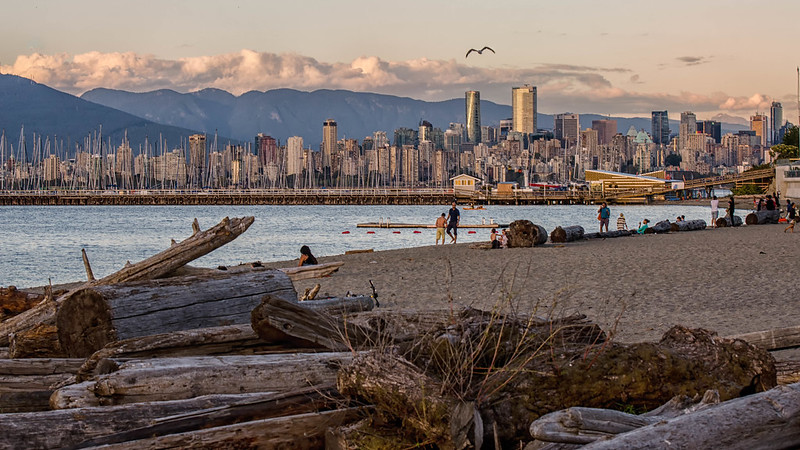
Why go: Long, sandy beaches and a mellow contour make this a training ground for first lessons, remount drills, and longer shoreline laps. At lower tide near Spanish Banks, you’ll get big, shallow flats that feel like paddling in a giant wading pool—fantastic for practicing turns and balance.
It’s also a wind playground. On warm days the afternoon sea breeze funnels in; great for experienced paddlers who want a down-and-back workout, less ideal for beginners. Start early for calm water, and give windsurfers and kiters tons of space once the breeze is up.
- Lessons & rentals: Windsure Adventure Watersports (Jericho)
- More info: Jericho Beach Kayak Centre posts local conditions notes and shore etiquette.
Coal Harbour (Advanced/Experienced)
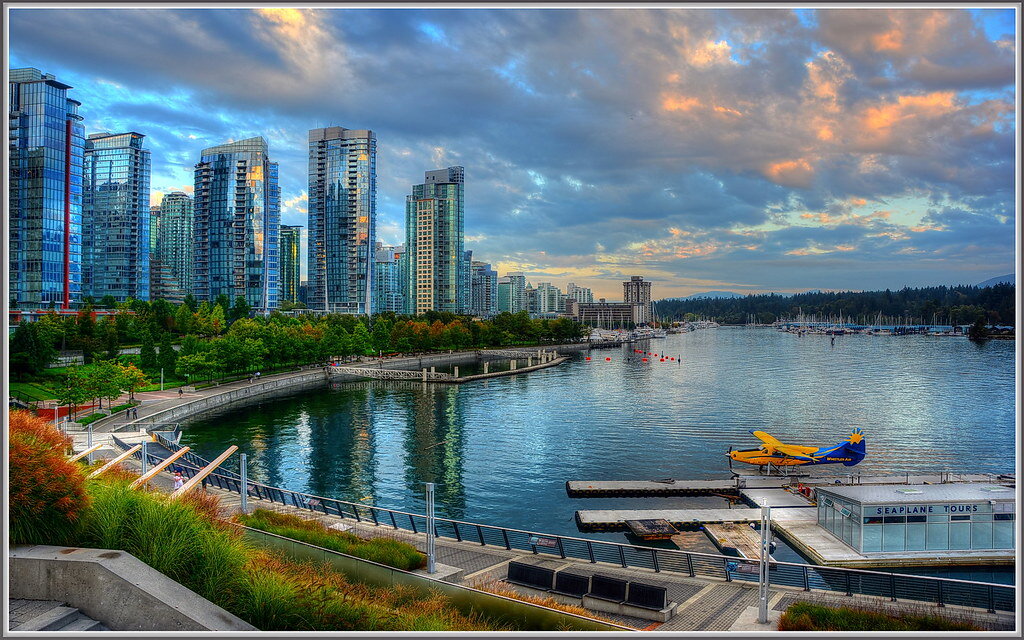
Why go: Ridiculous scenery: Stanley Park, North Shore peaks, floatplanes lifting off beside you. Also: traffic. Between tour boats, harbor patrol, and seaplanes, this is not a beginner venue. If you paddle here, hug the edges, keep your head on a swivel, and know the zones you must avoid.
Plan your lap for truly calm windows and go with paddlers who are comfortable in confused wake. Visibility matters—bright clothing and a light at dusk help other traffic pick you up against the background.
North Shore & Indian Arm
Deep Cove
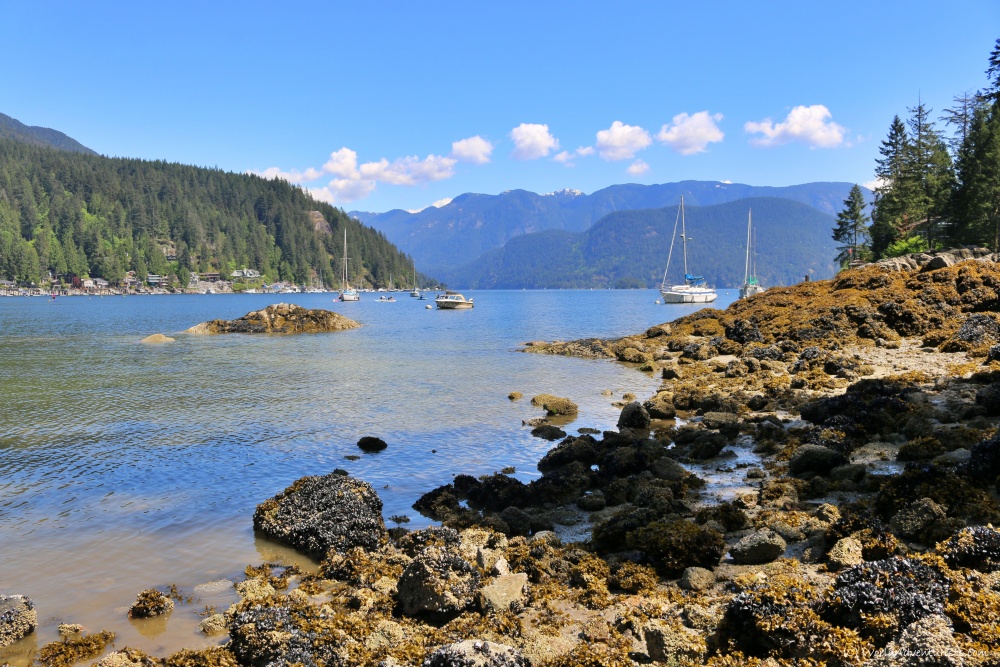
Why go: Classic North Shore morning. Forested shoreline, seals, and long glides when the surface is glass. Paddle the east side toward Jug Island for an easy out-and-back; extend farther up Indian Arm only if your group has experience and the gear for colder, deeper water.
Parking fills rapidly on sunny weekends; going early solves most problems. Expect a predictable afternoon inflow—treat the outbound leg as your “into the wind” effort and enjoy the push home. Rentals and lessons are right at the launch, which keeps logistics painless.
- Rentals/lessons: Deep Cove Kayak & SUP (large fleet; book ahead on sunny weekends).
- Local rhythm: Parking gets tight by mid-morning; bus or rideshare saves time.
Cates Park (Whey-Ah-Wichen)
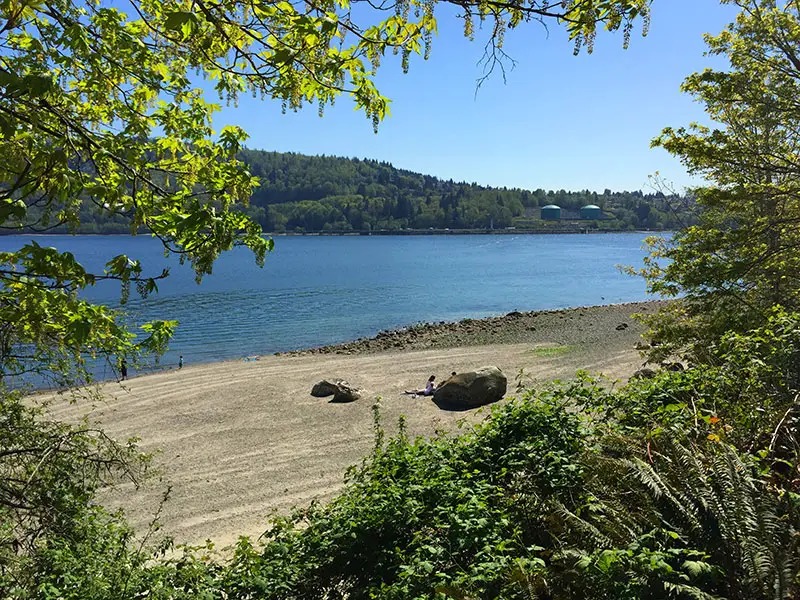
Why go: A calmer alternative near Deep Cove with sandy entries, washrooms, and room to spread out. It’s a friendly place for casual laps or for staging a one-way to Deep Cove when you’ve arranged a shuttle or rental pickup.
Use the shoreline to Grey Rocks Island for mellow water. The same afternoon wind pattern applies—expect bumps building toward mid-day. Pack patience for parking on summer weekends, and launch/land efficiently to keep the beach moving.
- Rentals: Cates Park Paddling Centre (seasonal)
- Wind: Expect an afternoon inflow up Indian Arm on warm days; plan your return legs accordingly.
Belcarra & Bedwell Bay
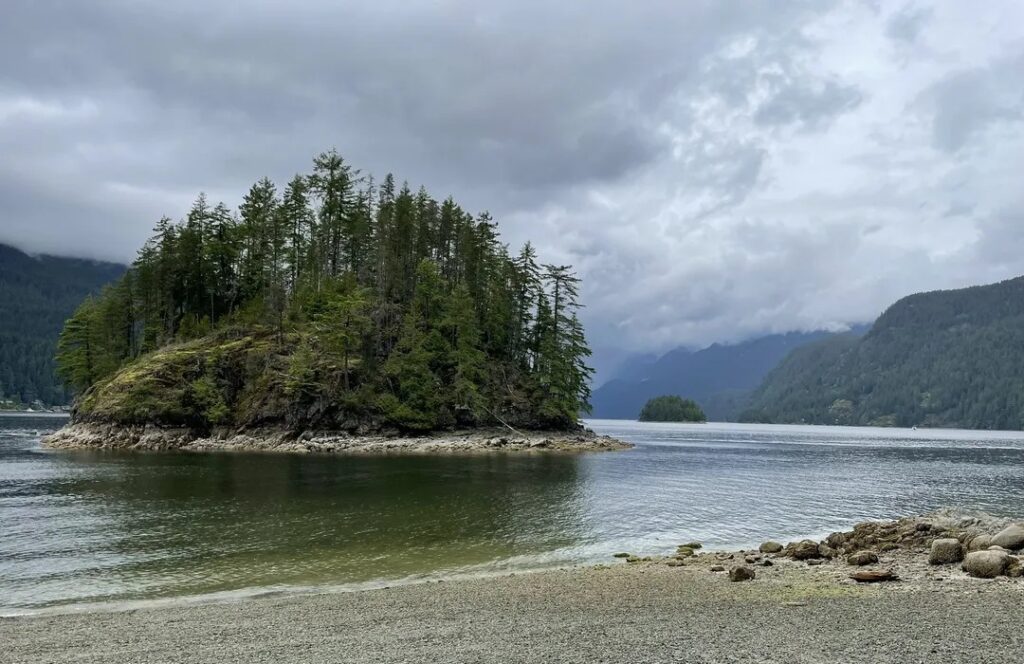
Why go: Quiet coves and tree-lined points make this a go-slow gem when the main Inlet is bumpy. Bedwell Bay often runs calmer than open water, with enough room for fitness loops or casual wildlife-spotting sessions.
Weekends fill fast with picnickers; arrive early and bring a trolley if your board isn’t inflatable. Keep a respectful gap from moored boats and docks, and mind the occasional motorboat wake sneaking around the headlands.
Barnet Marine Park (Burnaby)
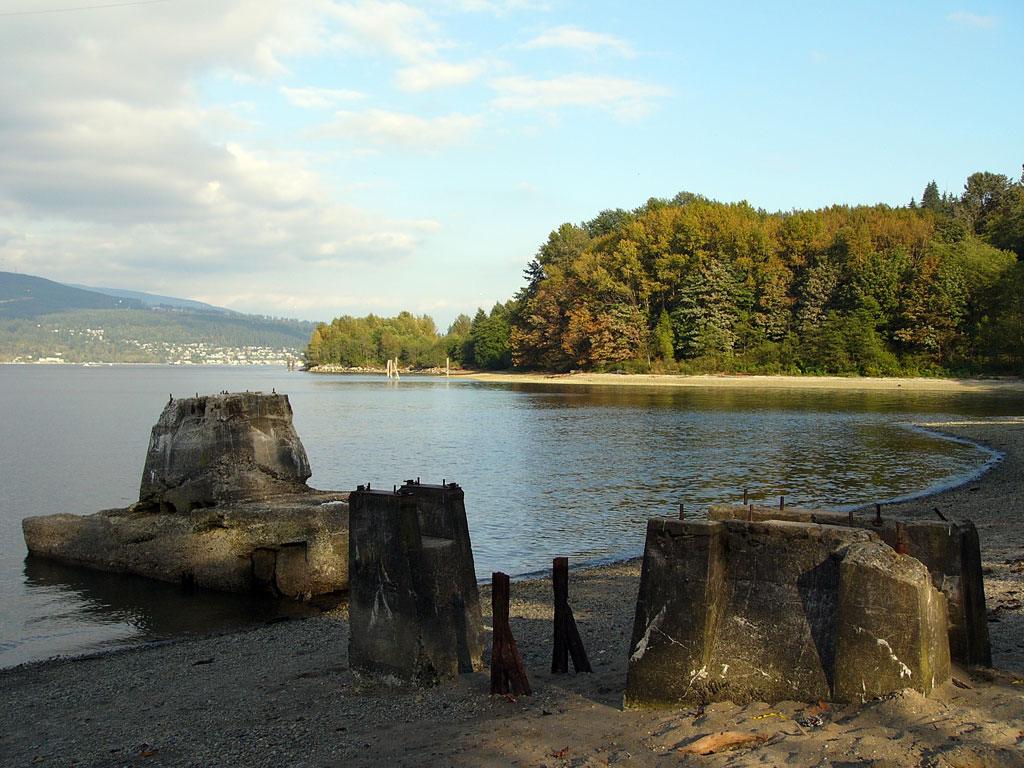
Why go: Convenient and scenic, but more exposed than it looks. You’ll get mountain views and quick shoreline laps, along with traffic from tugs, freighters, and the odd speedboat. When the wind lines up with boat wake, the chop can feel spicy.
Pick true calm windows, stick near shore, and avoid restricted zones near industrial docks. Treat this as an intermediate spot: great practice for reading wake, not ideal for a first-ever SUP session.
Lakes to go Paddleboarding Near Vancouver (Flatwater Favorites)
Buntzen Lake (Anmore)
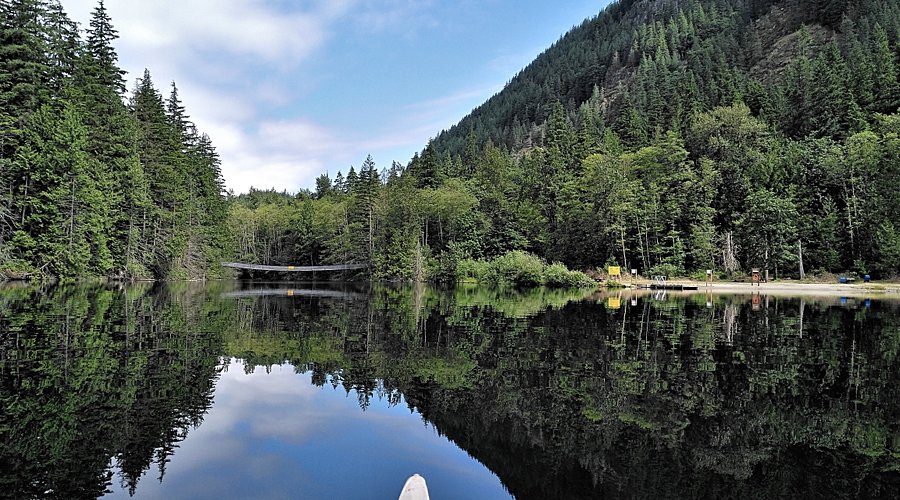
Why go: Long, narrow, and powerboat-free—perfect for fitness paddles and technique work. Mornings are typically glassy; by early afternoon on warm days, a valley breeze ripples the surface in your favor for a down-and-back workout.
Parking is the real crux on summer weekends, so go early. Run South Beach to North Beach laps and use shore markers to track progress. Water stays cool year-round; a wind shell and quick dry layers make shoulder-season sessions surprisingly comfortable.
Plan it: South Beach to North Beach and back is an easy benchmark. Avoid crowd crush by arriving before 9 a.m. on sunny weekends.
Sasamat Lake (Belcarra/Port Moody)
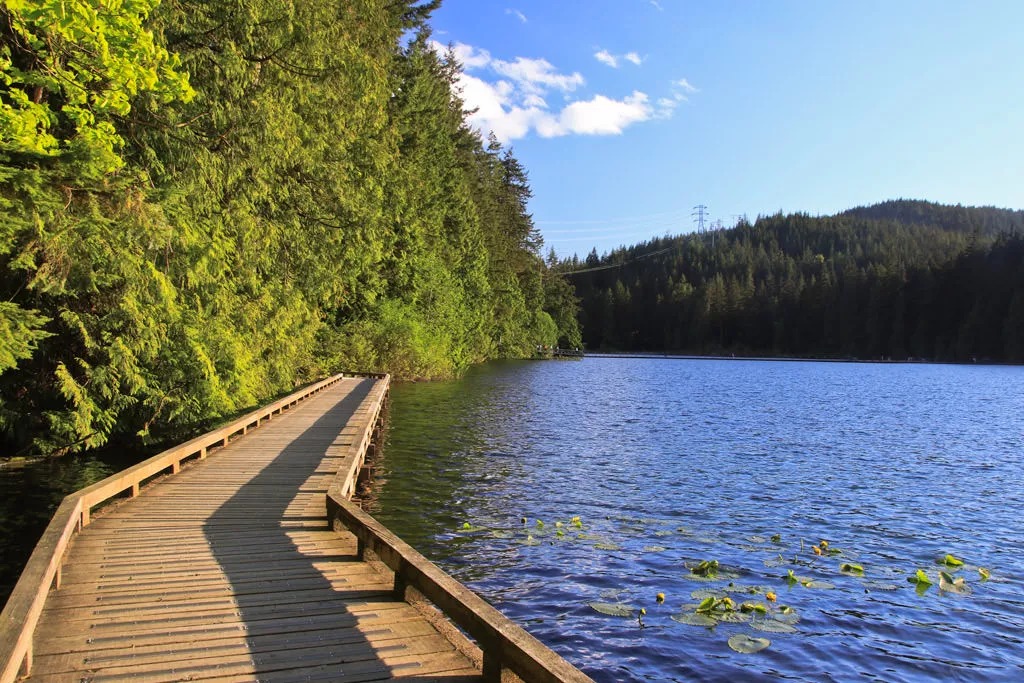
Why go: Small, warm in summer, and beginner-friendly. The floating bridge and sandy beaches mean easy entries and lots of places to pause. With no powerboats, it’s an ideal first-lesson venue or family paddle.
Because it’s compact, courtesy matters: keep your wake low near swimmers and give anglers a wide berth. Stairs from parking to shore make inflatables a win; hard boards are doable with a shoulder strap and patience.
Alouette Lake (Golden Ears Provincial Park)
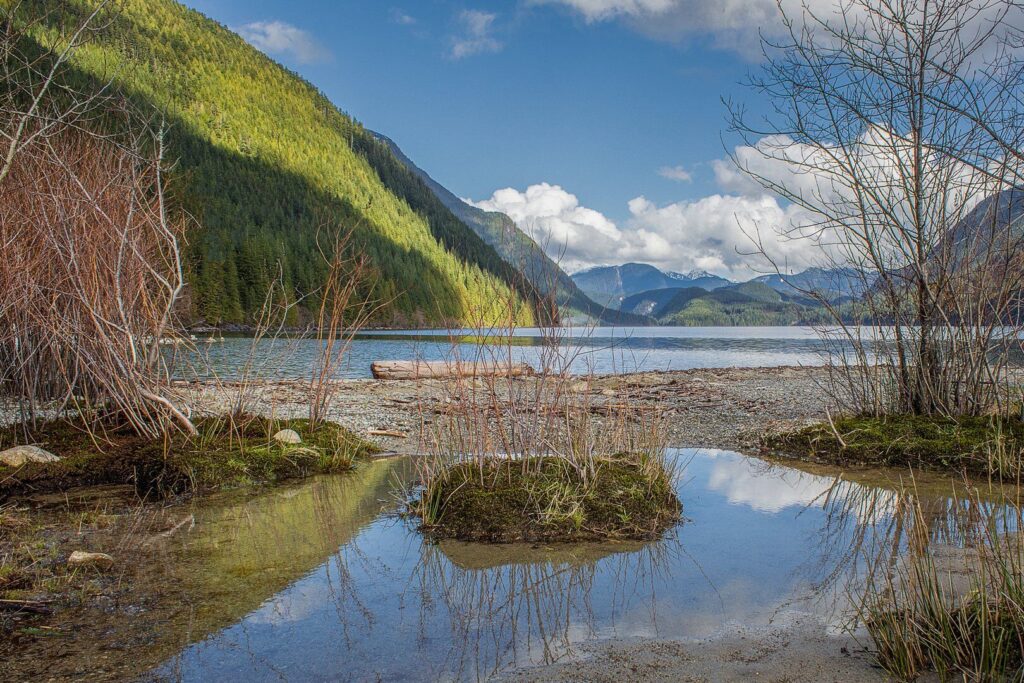
Why go: Big alpine views and a long shoreline invite exploration, but the wind deserves respect. The south end is usually calmer; farther up-lake you’ll feel a steady inflow on hot afternoons that can turn a casual tour into a grind if you misjudge the turn-around.
Treat the northbound leg as your work interval and enjoy a tailwind back. The water is cold year-round—layer accordingly—and day-use parking reaches capacity early on peak days. Boat traffic increases later; hug the shore for the smoothest ride.
Logistics: Day-use parking fills early; bring warm layers even in July. The water is cold year-round.
Deer Lake (Burnaby)
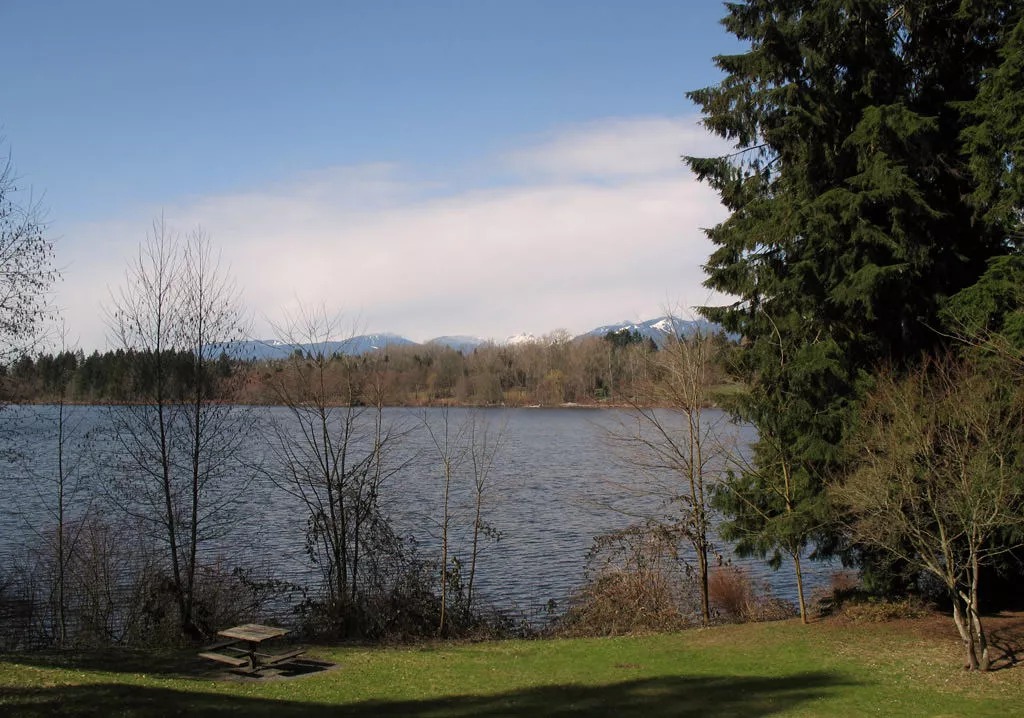
Why go: Urban calm in a compact package. This is where brand-new paddlers can figure out stance, turns, and remounts without current or big wind. Birdlife is a perk—glide quietly and give nesting areas a respectful buffer.
Short laps make it perfect for quick after-work sessions or teaching friends. Because it’s small, it can feel busy at peak times; go early or late for a quieter surface and easier parking.
Rentals, Lessons & Tours (Trusted Operators)
- Vancouver Water Adventures — Granville Island; rentals, tours, beginner lessons.
- Windsure — Jericho Beach; shoreline-friendly lessons, SUP and wind sports.
- Deep Cove Kayak & SUP — Deep Cove; big fleet, coaching, clinics.
- Jericho Beach Kayak Centre — kayak-heavy, but handy local conditions and shore notes.
- Cates Park Paddling Centre — North Vancouver; seasonal SUP rentals at a mellow launch.
Conditions, Tides & Wind (Read This Before You Launch)
Vancouver paddling is mostly about timing. The same beach can be glass at 8 a.m. and a washing machine by 2 p.m. A few simple habits keep your day fun:
- Pick mornings when you can. Warm days bring a reliable afternoon inflow, especially up Indian Arm and across English Bay.
- Work with the shoreline. Hug the coast for smoother water and quick exits. Cross open fetch only when you’re sure about wind trends.
- Watch boat traffic. False Creek and Coal Harbour are busy. Ferries and floatplanes have right of way and limited maneuvering; give them space and cross channels decisively.
- Check water quality. After heavy rain, some Vancouver beaches post advisories. A quick check saves surprises.
- Cold water is a thing. The ocean stays cold year-round. Dress for the water, not the air—especially in spring and fall. Neoprene booties and a wind shell buy comfort without overthinking it.
- Know the basics of self-rescue. Practice remounts in waist-deep water before you need them in chop.
Rules, Safety & What to Carry
Keep it simple and safe. Local operators will echo the same checklist:
- PFD + leash: Wear a well-fitting personal flotation device and use a leash suited to the water (straight or coiled for flatwater; never a leash in moving rivers).
- Sound signal: A pea-less whistle is light and audible.
- Lights if near dusk: A small white light helps other traffic see you; finish before dark.
- Dry bag: Phone in a waterproof case, water, snack, small first-aid, and a spare warm layer.
- Footwear: Bare feet are fine in summer; water shoes or booties help in shoulder seasons and rocky entries.
Sample Half-Day Plans
- Urban first-timer: Rent near Granville Island, loop Alder Bay and Charleson Park, grab lunch at the market.
- Sunset lap: Launch at Second Beach, cruise the edge of English Bay toward Siwash Rock, and be off the water before dark.
- North Shore morning: Deep Cove shoreline to Jug Island and back before the inflow kicks up.
- Family flatwater: Sasamat Lake for warm water and short laps with frequent swim breaks.
- Fitness day: Buntzen Lake out-and-back; track splits and stroke rate on a watch.
Etiquette That Keeps Places Open
- Give swim zones a wide buffer; avoid sprinting through crowded shallows.
- Leave wildlife alone—seals are curious; you don’t need to be.
- Rinse boards after ocean sessions to protect lake ecosystems.
- Launch and land quickly at busy pinch points; keep conversations off the ramp.
- Pack out everything. That includes coffee lids and the sandy band-aid you didn’t mean to bring.
More Vancouver & BC Inspiration from Discover the PNW
- Top Weekend Getaways from Vancouver, BC — connect a paddle day with an easy road-trip.
- Things to See in Stanley Park — make a beach-plus-park day around English Bay.
- Discover British Columbia — more lakes, islands, and marine ideas across the province.
Useful External Links (for planning)
- Vancouver Water Adventures — Granville Island
- Windsure — Jericho Beach
- Deep Cove Kayak & SUP — rentals & lessons
- Jericho Beach Kayak Centre — local info
- Cates Park Paddling Centre — North Van
- Environment Canada marine forecasts (Howe Sound / Strait of Georgia)
- Vancouver Coastal Health — Beach Water Quality
FAQ
When is the best time of day to paddle in Vancouver?
Mornings. You’ll beat wind, boat wake, and parking drama. If mornings are a no-go, aim for a calm evening window and hug the shoreline to stay out of the rougher water.
Do I need a wetsuit?
In midsummer you can often go without on short ocean sessions, but the water is cold year-round. Early summer and fall feel better with a shorty. For shoulder seasons or longer exposures, go full-sleeve 3/2 or add neoprene booties and a wind shell. Lakes warm up faster than the ocean.
Is paddleboarding allowed everywhere in Stanley Park?
You can launch from Second or Third Beach in calm conditions, but avoid busy swim zones and keep huge space around lifeguarded areas. Coal Harbour is advanced only due to floatplanes and boat traffic—if you’re not 100% comfortable in wakes, choose English Bay or a lake.
Are there tides I should care about?
Yes. Large tide swings change shoreline depth and can speed up currents near inlets. Check a tide table, start with more water under your fin, and avoid shallow reefs and pilings. Tides don’t matter on lakes; wind does.
Where should a total beginner start?
Book a 60–90 minute lesson at Jericho or Granville Island. You’ll learn stance, basic turns, and self-rescue in smooth water. Then graduate to Deep Cove on a calm morning, and work up to English Bay on light-wind evenings.
Respect the water, pick the right day, and Vancouver will spoil you. See you on the glass.
Content creator and writer for multiple websites including All About Glamping, Fit Living Lifestyle, and Live Dream Discover. A full-time traveler who has spoken at various travel conferences around the world.

